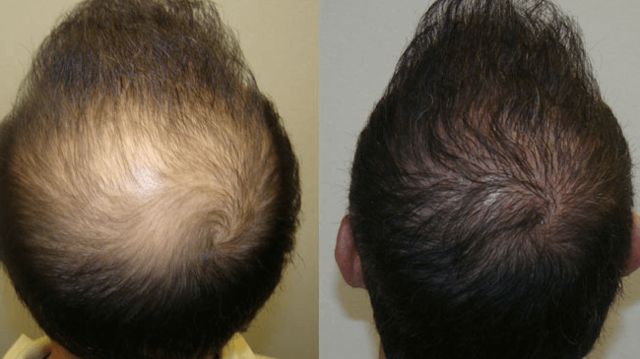Synthetic Hair Transplant: A Complete Guide For Your Hair Transplant Journey

Hair loss is a widespread problem that is visible not only among old-aged people but also among youths. There are various reasons behind it. These include genes, environmental factors, hormonal imbalances, etc. Fewer hairs may result in a feeling of insecurity in the person suffering from it. This might lead them to lose their personality as well. They may develop self-doubts and lack confidence. The problem of hair loss could be more serious than it appears. A person may have to go through long-term mental and social effects. Synthetic hair transplant price may appear promising for those who have no other choice. However, it is crucial to recognize that if one chooses to have the procedure, one will also be responsible for all the hazards involved.
Synthetic ones replaced traditional hair transplants in the late 1970s. There is a surgical treatment that involves transplanting individual hair strands, not wigs or other hair accessories. This is where hair transplant surgery comes into the scene. It is a medical process performed by well-qualified and trained hair transplant surgeons. Males and females of all races suffer from partial baldness or hair thinning. Synthetic fibre hairs are implanted into the previously bald areas.
What is A Synthetic Hair Transplant?
A synthetic hair transplant is a surgical procedure. Here, synthetic fibres are implanted into previously bald areas. The treatment is performed by qualified and experienced physicians. They use specialised hair implant devices. Each strand of synthetic hair has a knot at its end. This is to prevent it from slipping out of the scalp. Synthetic hair strands are known to be more durable than natural hair. Moreover, these are biocompatible. A fibre compatibility test is performed before the procedure to ensure the synthetic hair is suitable for the skin of the patient.
The surgeon uses special implanters. They can implant up to 100 strands of artificial hair into the bald area. This outpatient procedure involves a light surgery. Any adverse reaction should be detected after the implantation of 100 strands. Synthetic hair is available in different lengths, shapes, and colours. This creates a natural-looking hairline.
How Is The Synthetic Hair Implant Procedure Performed?
The procedure of synthetic hair transplant starts with a fibre compatibility test. This is to ensure that the patient is not allergic to synthetic hair. The process involves inserting 100 artificial hairs in the first month. These are monitored for nearly a month for any allergic reactions. Once there are no signs of such allergic reactions, the full procedure is performed. Patients are required to visit the clinic every month for follow-ups and scalp cleaning. This involves removing sebum plugs and preventing any infection, inflammation, and even cysts. It is crucial to maintain regular follow-ups. This is to ensure the success of the synthetic hair transplant procedure.
The synthetic hair transplant procedure involves several steps. The following are the steps that are followed in this procedure:
- The first step is to anaesthetise the scalp. This is usually done with local anaesthesia to minimise any discomfort or pain during the procedure.
- Next, the doctor uses an automatic hair implant device. It implants each hair strand into the scalp of the patient. The device inserts and hooks the knot, which is at the end of each strand, inside the scalp fascia.
- The process is done one by one and continues until the desired hair density is achieved. The implantation process continues till the time the doctor reaches the appropriate hair density. This may take several hours to complete. It depends on the extent of the hair loss.
- Once the implantation is complete, the doctor will cleanse the scalp. This is done with a disinfectant to prevent any infections. It is essential to keep the scalp clean and free from infection during the recovery period. This not only ensures the success of the process but also keeps the scalp healthy.
Who should think of an artificial hair transplant?
Synthetic hair transplantation is a procedure to implant synthetic hair into the scalp to restore hair growth. However, it is necessary to understand that not everyone is eligible to undergo this procedure. Here are some guidelines for that:
-
Good health and scalp health
An individual must be in good overall health. One must have good scalp health to be eligible for synthetic hair transplantation.
-
No sensitivity or medical conditions
Individuals who do not suffer from sensitive skin or scalp problems can undergo this process. The patient must not have HIV, hepatitis, uncontrolled diabetes, asthma, heart problems, autoimmune diseases, hypertension, or high blood pressure. They should also not be taking blood thinners or beta-blockers to be eligible for synthetic hair transplantation.
-
Pass the tolerance test
Individuals who pass the tolerance test with no sensitivity to synthetic hair may be eligible for synthetic hair transplantation.
-
Prepared to follow aftercare guidelines
Individuals who are prepared to follow the proper scalp aftercare and hygiene guidelines must opt for this process. Not everyone is capable of following the strict routine after synthetic hair transplantation.
-
Need for touch-ups
Individuals who are willing to undergo touch-ups to maintain the hair may be eligible for synthetic hair transplantation.
Are there any other complications?
Synthetic hair transplants have been known to have several additional complications. Although hair transplant cost in India have currently made it an easy option for many people, it remains a complicated procedure. The thin dermal tissue in the temples and low frontal hairline areas can cause difficulty inserting synthetic hair fibres. This can lead to a higher risk of apparent inflammation and scar formation.
Conclusion
In conclusion, we can say that this procedure is appropriate for those who have limited donor areas. The above guidelines can help one decide whether they want to undergo this procedure or not. All these factors should be taken into consideration while considering synthetic hair transplant as this is an affordable hair restoration option.








